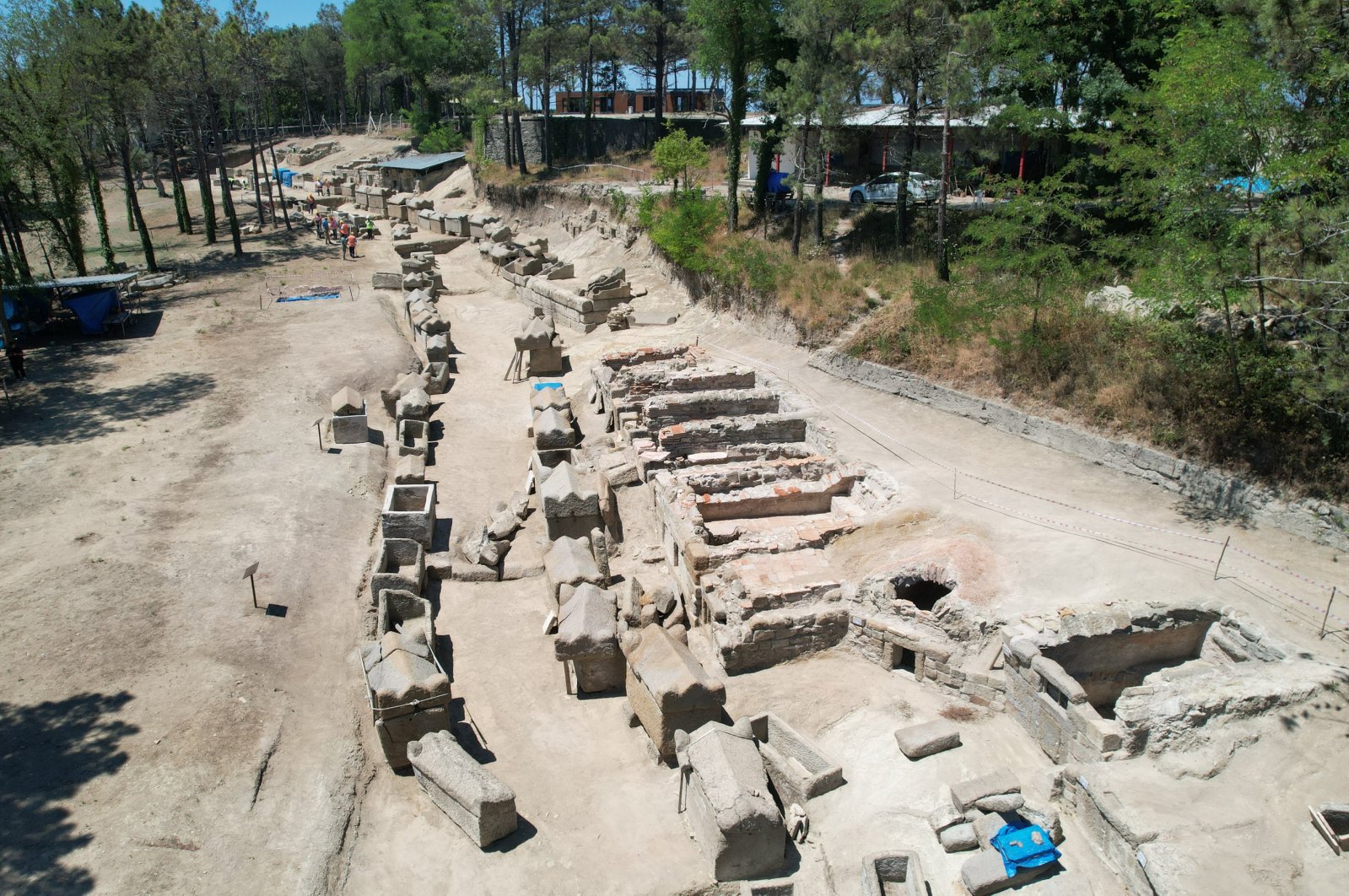
The necropolis (cemetery) area from the Roman period located in the ancient city of Tios in Zonguldak in northern Türkiye will be revitalized for tourism and cultural life through archaeological work.
Excavation work, initiated three years ago in the ancient city situated in the Filyos town of Çaycuma district, has brought the Roman necropolis to light.
A team of 44 people is conducting the excavations.
During the work, 96 sarcophagi, 23 chamber tombs, seven cist tombs and 60 tile tombs have been discovered, along with 1,317 inventory items.
The findings and artifacts unearthed in these meticulously conducted excavations continue to shed light on the region's history.
Professor Şahin Yıldırım, who leads the project, told Anadolu Agency (AA) that the ancient city of Tios holds significant importance for the region.
Highlighting the dedicated and intensive efforts of the excavation team, Yıldırım explained that Tios, the only ancient city in the Black Sea region that has survived without modern settlements on it, revealed a necropolis area unprecedented in any other ancient city in the region. "In the initial work done in this area, which we can also call the eastern necropolis of Tios, we encountered a vast necropolis area stretching from the late fifth century B.C. to the fifth century A.D," he said.
"The primary identity of this necropolis in the city dates back to the first and third centuries A.D., that is, to the Roman period. We see that this area was constructed as a planned cemetery. The word necropolis means 'city of the dead.' We have seen that the cemetery here was created with a structure consisting of streets, alleys and terraces, just like a city," he said.
Yıldırım mentioned that they have uncovered a street approximately 500 meters (1,640.42 feet) long, with sarcophagi on both its right and left sides, and that chamber tombs, believed to belong to people with higher income levels at that time, were found on the slopes and ridges. He noted that they encountered numerous findings, particularly in the sarcophagus areas dated to the second and third centuries A.D.
Yıldırım stated that they have cataloged over a thousand artifacts, which are housed at the Karadeniz Ereğli Museum Directorate.
He expressed that they have gained much important information about the Roman period, saying: "Findings, tombstones and inscriptions indicating that a significant portion of the inhabitants of this city in the time of Emperor Marcus Aurelius gained the right to be Roman imperial citizens have been discovered. We came across graves thought to belong to Roman soldiers."
Yıldırım emphasized the significance of the ancient city and explained that "So far, no such necropolis area has been encountered in any ancient city in the Black Sea region. This area holds a very important place for Türkiye and Black Sea archaeology. This necropolis area has been preserved as it is, maintaining its structure significantly and bringing it to the present day."
He explained that none of the cities in the Black Sea had a wall system during the Roman period, which is why the cities were plundered and captured suddenly. "We have seen that the necropolises were also looted. During the Gothic invasions, a significant portion of the graves were opened, some valuable items were taken, and after the Goths left, the Romans rearranged the graves of their dead and continued the necropolis anew. This was an important data point for us."
Yıldırım noted that human skeletons were found in the graves during the excavations, stating: "According to the initial anthropological research, it is predicted that the individuals whose skeletons were found in the graves may have family ties with each other. The names on the inscriptions found in some chamber tombs also show that the people buried here were related to each other."
He added that some chamber tombs were reused by the Byzantines in the sixth century A.D., and they encountered tombs, tombstones and inscriptions belonging to Roman families of higher income levels.
